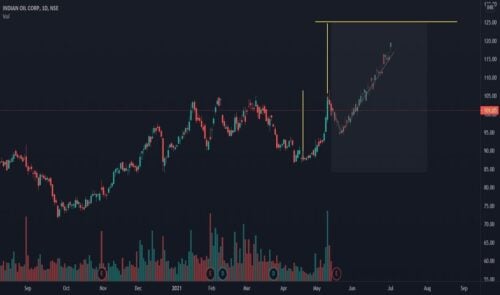As an investor, it is essential to know that it is possible to instruct your brokerage about when and how much of an order should be executed. This article discusses fill or kill (FOK) orders in stock trading and how they can be used.
So, what is a FOK in stock trading? Read on for the answer.
What Is FOK in Stock Trading?
Fill or kill (FOK) is an instruction to your brokerage firm that the specified order must either be executed immediately or not at all. They are usually placed only by active traders dealing in many securities.
Such a big order runs the risk of causing significant market disruption.
It may impact the respective stock price if the brokerage allows prolonged execution.
When using a FOK instruction, brokers ensure they last a limited period (a few seconds at most).

This negates the possibility of significant price movements.
Within those few seconds, the entire order must execute, or the whole thing must be canceled.
In this sense, FOKs are a combination of all or none (AON) and immediate or cancel (IOC) order types (we will explain both of them in later sections).
FOKs are a part of a group of order types that help traders control how much and within what timelines their instructions get executed.
Below, we cover how to use a FOK order, when it might be beneficial, and more. We also introduce the other order types.
Fill or Kill Order Example
Let us say that a trader places a fill or kill order for stock ABC requesting 5 million shares at $20 apiece. How is it implemented in practice?
The brokerage will evaluate it like this:
Firstly it will check if it has more than 5 million stocks of ABC in its portfolio.
If not, then the order is immediately canceled.
Next, they will check what price can be offered against the securities. Can it be sold at the specified price, i.e., $20?
If the answer is no, then again, a cancelation will occur.
Finally, if the shares are available and the brokerage is OK with selling them at any price at or below $20, the entire order executes immediately.
Other Orders
Apart from FOK orders, there are other ways in which the brokerage can be instructed regarding order placement.
For example, a trader may want to ensure that the entire order is completed.
In other cases, they might like to see that the order should be executed only within a specific time frame.
Below are three order types that help with all this.
IOC
As the name suggests, an immediate or cancel order tells the broker to execute the order immediately, as much of it as possible.
The rest of the instruction, which remains unfulfilled, is then abandoned.

Unlike fill or kill orders, IOCs only require partial fulfillment. There is no requirement to ensure that the absolute position specified is met.
Investors use IOCs when they would like at least a part of a large order to be fulfilled but don’t want to have the rest executed at multiple price points.
Big orders take time to execute and can move the value of the security. Hence not specifying an IOC might end up causing a loss.
Some investors also use them to automatically cancel their position and not let it linger in the system till the end of the day.
AON
An all-or-none order is on the other end of an IOC order – it must be executed either entirely or not at all.
It is also different from a FOK order since an AON is executed, come what may.

It won’t be canceled until the whole instruction is completed.
AON orders should only be used when the trader is confident that the stock’s price will go up or down in a big way.
Minor price changes due to placing the order will happen, but the trader’s entire instruction will get completed.
GTC
Good till canceled orders continue to persist in the system until they are either explicitly canceled, expire, or get fulfilled.
Each broker sets their timeframe for GTC order expiry, but usually, it is within 60 days to six months of the order placement.
GTC orders are great for investors who do not want to track day to day price movements of a security.
They can simply place a GTC limit order, specify a reasonable limit price, and let the order remain in the system until that price is reached.

Should I Use a Fill or Kill Order?
Fill or kill orders are meant for traders buying or selling huge stocks.
They aren’t designed for small investors trading a few securities.
They aim to ensure that such big orders do not impact the market price. Otherwise, it might cause a loss.
For retail traders, a simple market order should suffice for this purpose.
Final Thoughts
A fill or kill order lets a trader specify that they want the order to either fill immediately or not at all.
It is beneficial for orders where a large volume of shares are bought or sold at once.
Letting the order drag on in such cases can create a significant change in the security price and might end up causing a loss to the investor.
Other types of orders specify the timeline of fulfillment for the brokerage.
These include immediate or cancel (complete what is possible and abandon the rest), all or none (execute the whole order or none at all), and GTC (let the order run until it gets fulfilled or expires on its own).
Each has its specific uses, and investors should learn when and how to employ them for their benefit.


 Tags:
Tags:










